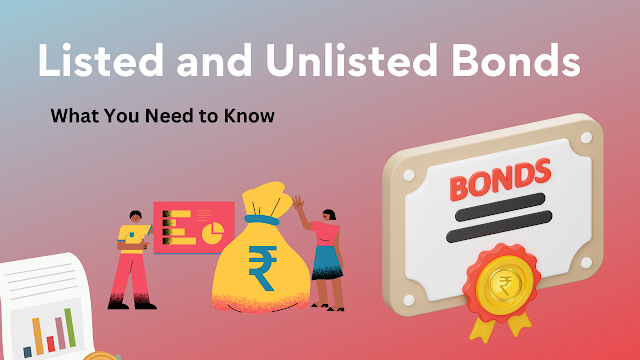Bonds are a popular investment option for individuals and institutions looking for a secure and steady source of income. They are issued by companies, government agencies, and municipalities, and provide the bondholder with a stream of fixed income in exchange for their investment. When it comes to bonds, there are two main types that are commonly traded - listed and unlisted bonds. In this article, we will take a deep dive into the world of bonds, and understand the key differences between listed and unlisted bonds.
What are Listed Bonds?
Listed bonds are bonds that are traded on a stock exchange. They are bought and sold just like stocks, and their prices are determined by the demand and supply of the market. Listed bonds are also known as traded bonds, and are highly regulated by securities regulators. They are considered to be a highly liquid investment, as the bondholder can easily sell their bonds whenever they wish to.What are Unlisted Bonds?
Unlisted bonds, on the other hand, are not traded on a stock exchange. They are also known as privately placed bonds, and are usually sold directly to investors by the issuer. Unlisted bonds are not regulated by securities regulators and are considered to be less liquid compared to listed bonds. The bondholder may find it difficult to sell their bonds if they wish to, as there is no secondary market for unlisted bonds.Key Differences between Listed and Unlisted Bonds
Here are some of the key differences between listed and unlisted bonds:Liquidity
As mentioned earlier, listed bonds are considered to be highly liquid, as they can be easily bought and sold on a stock exchange. On the other hand, unlisted bonds are considered to be less liquid, as there is no secondary market for them.Regulation
Listed bonds are highly regulated by securities regulators, while unlisted bonds are not. This means that listed bonds must meet certain standards set by the regulator, and are subject to periodic inspections.Transparency
Listed bonds are highly transparent, as the prices and other details of the bonds are readily available to the public. On the other hand, unlisted bonds are not transparent, as the prices and other details are not readily available to the public.Risk
Listed bonds are considered to be less risky compared to unlisted bonds, as they are highly regulated and their prices are determined by the demand and supply of the market. On the other hand, unlisted bonds are considered to be riskier, as they are not regulated and their prices are not readily available to the public.Conclusion
In conclusion, listed and unlisted bonds are two different types of bonds, each with its own set of advantages and disadvantages. Listed bonds are highly liquid, regulated, and transparent, while unlisted bonds are less liquid, unregulated, and not transparent. When choosing between the two, it is important to consider your personal investment goals and risk tolerance, and seek advice from a financial professional




Comments
Post a Comment